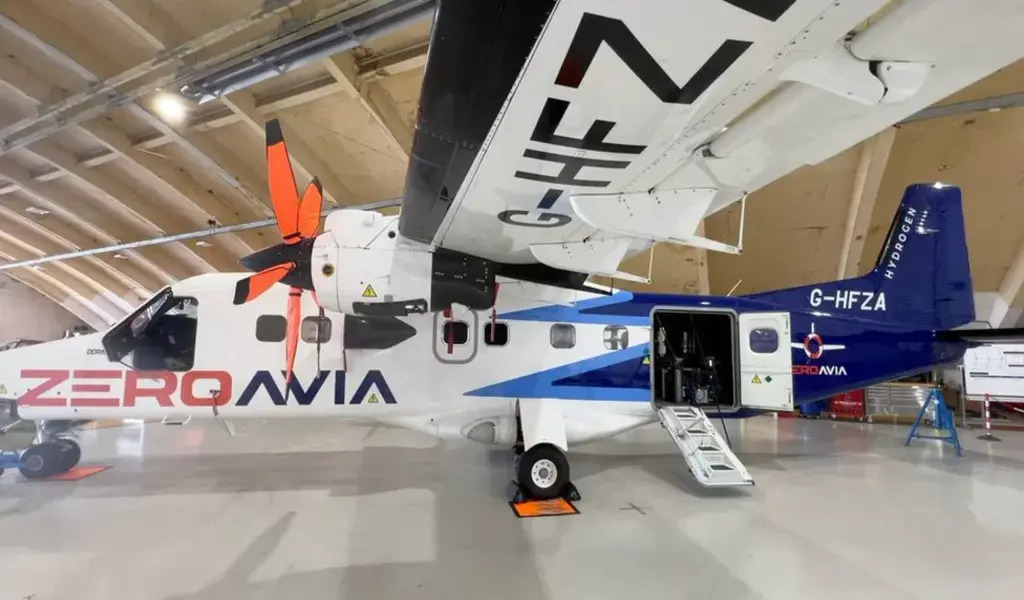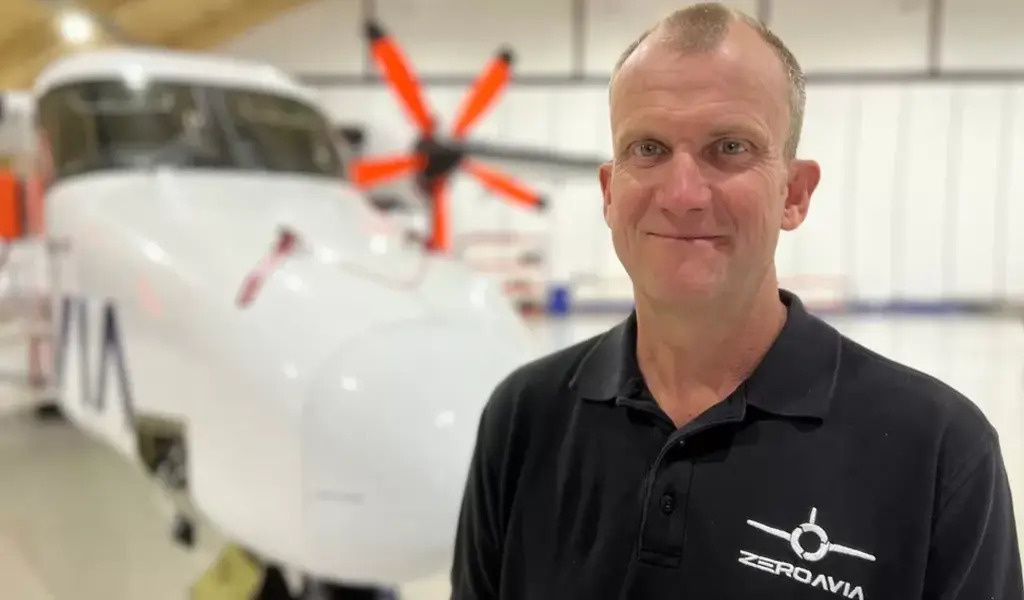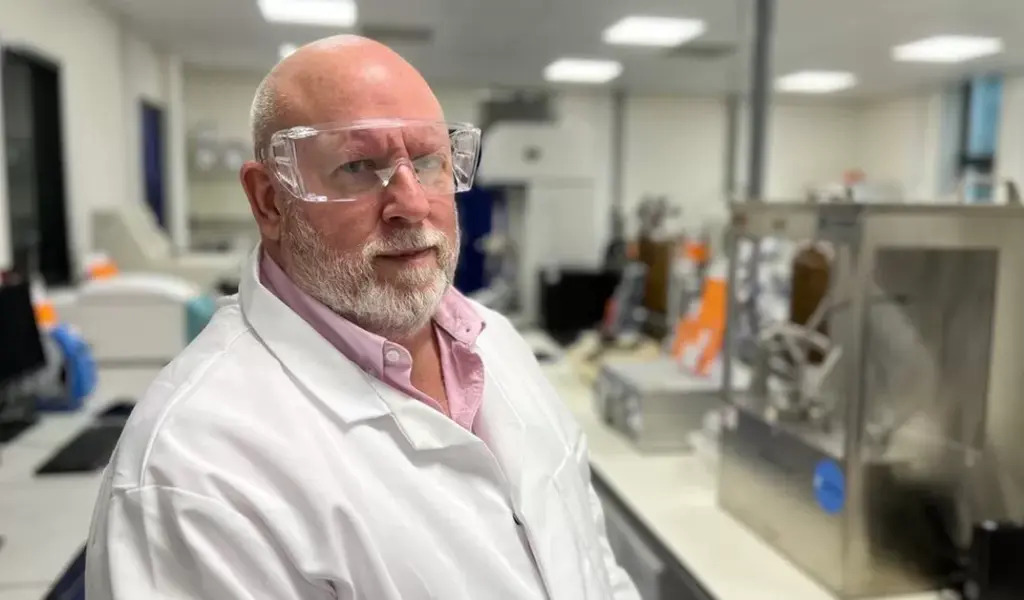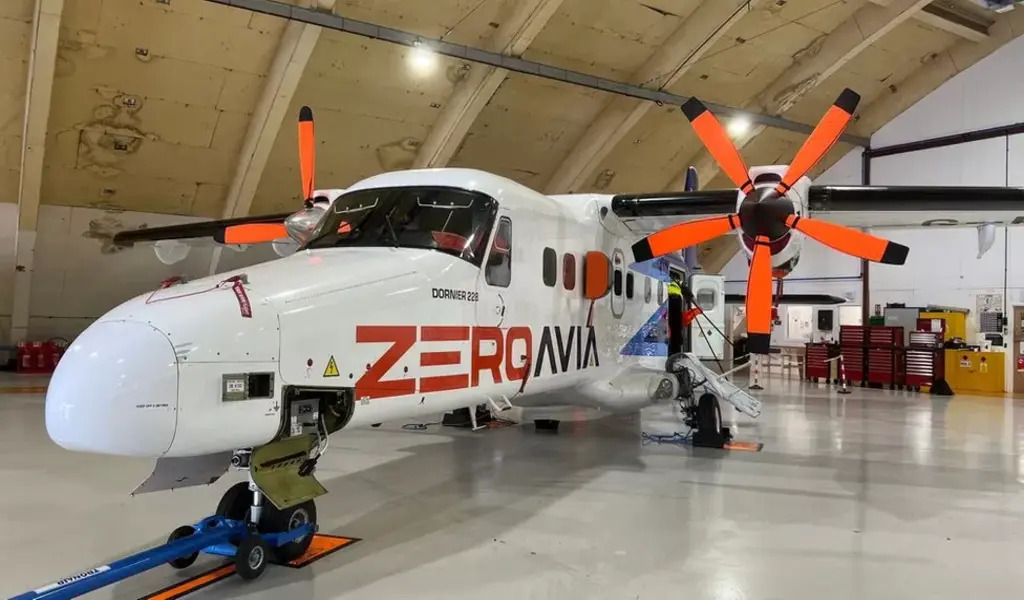News
Carbon-Emission-Free Aviation: An Ambitious ‘ZeroAvia’ Plan For Commercial Flights By 2025
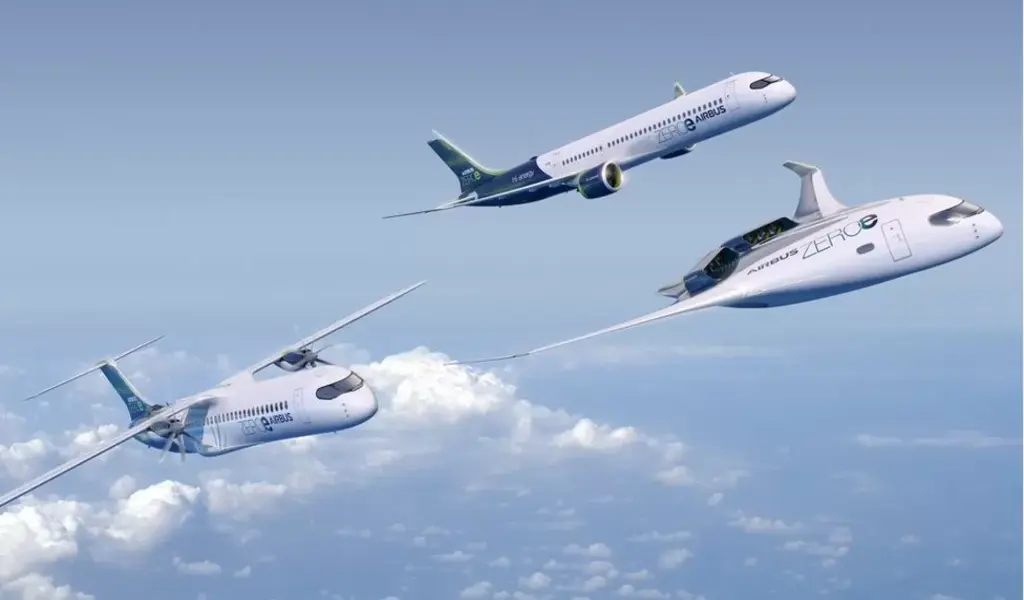
(CTN NEWS) – By 2025, an aviation company is intending to operate commercial flights utilizing an electric engine that produces zero carbon emissions.
ZeroAvia has successfully conducted nine test flights at Cotswold Airport, located near Cirencester, using its hydrogen-electric engine.
The engine’s sole emission is water, making it environmentally friendly.
Sergey Kiselev, Vice-President of ZeroAvia, expressed that this engine would play a significant role in accomplishing “aviation decarbonization.”
While numerous aerospace companies are currently working on hydrogen-powered engines, their commercial viability is not anticipated until 2035.
However, a particular aviation company has managed to achieve this milestone earlier than expected. How did they accomplish it, and is it feasible to enable climate-friendly air travel sooner than previously anticipated?
ZeroAvia’s Innovative Approach: Retrofitting the Dornier 228 for Hydrogen-Electric Propulsion
The aerospace company based in Gloucestershire has expedited their progress by taking a different approach—they are not designing an entirely new aircraft.
ZeroAvia is focusing their efforts on the Dornier 228, a conventional 19-seater plane equipped with two propellers typically powered by kerosene.
To achieve their goal, one of the propellers has been replaced with an electric engine, and the necessary electricity is generated on-board using a hydrogen fuel cell.
During the testing phase, the other engine continues to be fueled by kerosene, serving as a backup in case of any issues.
Once the technology is proven successful, both engines will operate using electricity from the hydrogen fuel cell.
In terms of safety, only the new engine needs to pass the required tests, and ZeroAvia is collaborating with the Civil Aviation Authority to obtain certification.
Test pilot Jon Killerby has flown the aircraft and shared that once airborne, they have been able to rely solely on the hydrogen electric system, significantly reducing the use of the conventional engine.
“We can reduce the power output of the conventional engine,” he explained, “and rely entirely on the hydrogen electric system. It generates sufficient thrust to keep the aircraft flying level.”
The performance has been highly impressive, and the advancements have been remarkable indeed.
Green Hydrogen: A Promising Path towards Sustainable Aviation
Hydrogen fuel cells have been widely utilized in cars and trucks, making them a well-established technology.
These fuel cells operate through a chemical process known as “reverse hydrolysis,” where hydrogen combines with oxygen to generate heat, water vapor, and most importantly, electricity.
This means that the engine powered by these fuel cells produces no greenhouse gases.
However, the source of hydrogen is a crucial factor. Professor Tim Mays, who has been researching hydrogen for three decades at Bath University, leads the UK Hydrogen Research Hub, which recently received an £11 million grant to explore hydrogen’s potential in combating climate change.
Professor Mays explained, “Currently, hydrogen is primarily produced by treating natural gas with steam, which is an unsustainable method.”
However, it is also possible to produce hydrogen through electrolysis, a process that splits water into hydrogen and oxygen using renewable electricity.
This method yields “green hydrogen,” which is precisely what the aviation industry requires.
“It’s a highly viable option because we genuinely need to replace kerosene,” added Professor Mays.
In summary, hydrogen fuel cells are a well-known technology that can power engines without emitting greenhouse gases. The key lies in obtaining hydrogen from sustainable sources, such as through electrolysis using renewable electricity.
This approach, known as green hydrogen, holds great potential for addressing the aviation industry’s need to transition away from kerosene and reduce its carbon footprint.
ZeroAvia’s Hydrogen-Powered Aircraft: From Small to Large and Long-Range
The Dornier 228, equipped with a hydrogen engine, is not a large aircraft. It is designed to accommodate approximately 12 passengers.
According to Sergey Kiselev, the Chief Commercial Officer, this aircraft has a range of about 250 to 310 miles (400 to 500 km). With this capability, it could cover routes such as Bristol Airport to Newcastle or London to Paris.
ZeroAvia has further ambitions for the future. By 2027, they plan to develop a larger hydrogen-electric engine capable of powering bigger aircraft.
These aircraft would have the potential to carry approximately 50 passengers and achieve a range of around 620 miles (1,000 km).
In summary, the current Dornier 228 with a hydrogen engine is a smaller aircraft suitable for short-range flights, while ZeroAvia envisions larger hydrogen-electric engines to enable longer journeys with increased passenger capacity in the coming years.
Challenges in Implementing Hydrogen Aviation: Infrastructure and Efficiency
“Like any technology, there are challenges,” Professor Mays remarks with a smile, acknowledging the hurdles ahead.
The aviation industry faces the task of constructing an entirely new infrastructure to support hydrogen utilization.
This includes establishing hydrogen production centers, developing a network for fuel distribution to airports, and implementing proper storage facilities.
However, hydrogen differs significantly from conventional kerosene.
One of the challenges is the space required to store hydrogen. To manage it effectively, the gas needs to be compressed to 350 or 700 times atmospheric pressure. Even then, it occupies more space compared to kerosene.
If transportation as a liquid is desired, it must be chilled to an extremely low temperature of 253 degrees below zero.
Currently, airports and aerospace firms are actively investigating the most suitable locations for hydrogen production, devising efficient transportation methods, and exploring storage solutions.
Professor Mays summarizes the situation by stating, “While it is possible to fly using hydrogen as a fuel, the optimization and super efficiency are yet to be achieved, and the required infrastructure is still in development.”
In essence, the challenges of hydrogen implementation in aviation involve addressing storage and transportation constraints, as well as optimizing efficiency.
The airports and aerospace firms are diligently working towards finding viable solutions to overcome these obstacles.
ZeroAvia’s Accelerated Progress and the Aerospace Industry’s Interest
Despite its small hangar at Cotswold Airport, located far from the prominent research labs of Airbus, Rolls Royce, and Boeing, ZeroAvia has already secured orders for over 1,500 units of its initial engine.
One such customer is Air Cahana, a Californian airline dedicated to the mission of decarbonizing aviation. Another early adopter is Dale Vince, an environmental entrepreneur and founder of the renewable energy company Ecotricity.
Mr. Vince is launching an airline called “Ecojet,” which plans to utilize ZeroAvia engines for passenger flights, starting with routes from Edinburgh to Southampton.
He expressed, “The quest for sustainable air travel has troubled the environmental movement for decades.
The desire to explore our remarkable world is deeply ingrained in the human spirit, and flights free from CO2 emissions, powered by renewable energy, will finally allow us to do so without harming our planet.”
Prominent aerospace companies are closely observing the progress of the small start-up, ZeroAvia. Among them, Airbus stands out with its extensive research program named ZeroE, which also focuses on hydrogen technology.
Airbus is exploring various approaches, including hydrogen fuel cells to generate electricity for propeller propulsion, as well as using liquid hydrogen for direct combustion.
However, Airbus’s target for deploying hydrogen-powered planes into commercial service is set for 2035, a full decade later than the smaller engines developed by ZeroAvia.
According to Sergey Kiselev, their decision to modify an existing aircraft’s engine rather than designing an entirely new aircraft was driven by this disparity.
Kiselev explains, “This approach allows us to bypass the complexities associated with certifying an entire aircraft. We can concentrate solely on certifying the engine, enabling us to achieve commercial operations at a much faster pace.”
ZeroAvia has made a commitment to its ambitious timeline. Currently, the company faces two major challenges.
The first involves ensuring the safety, certification, and readiness of their engine for operational use by 2025, a goal they are well on their way to achieving.
The second challenge, which proves to be more difficult, revolves around ensuring a reliable supply of fresh hydrogen at the destination when the aircraft lands.
In summary, established aerospace giants like Airbus are closely monitoring the advancements of the small start-up, ZeroAvia.
ZeroAvia’s decision to modify existing aircraft engines instead of developing new ones has allowed them to accelerate their progress, with a target of commercial operations by 2025.
While they are making substantial strides in meeting their engine-related challenges, the task of establishing a consistent hydrogen supply at landing destinations remains a more demanding endeavor.
RELATED CTN NEWS:
Record-High Youth Unemployment In China Signals Struggling Post-Pandemic Recovery
South Korean President Blames Failure To Follow Disaster Response Protocols For Rising Death Toll

